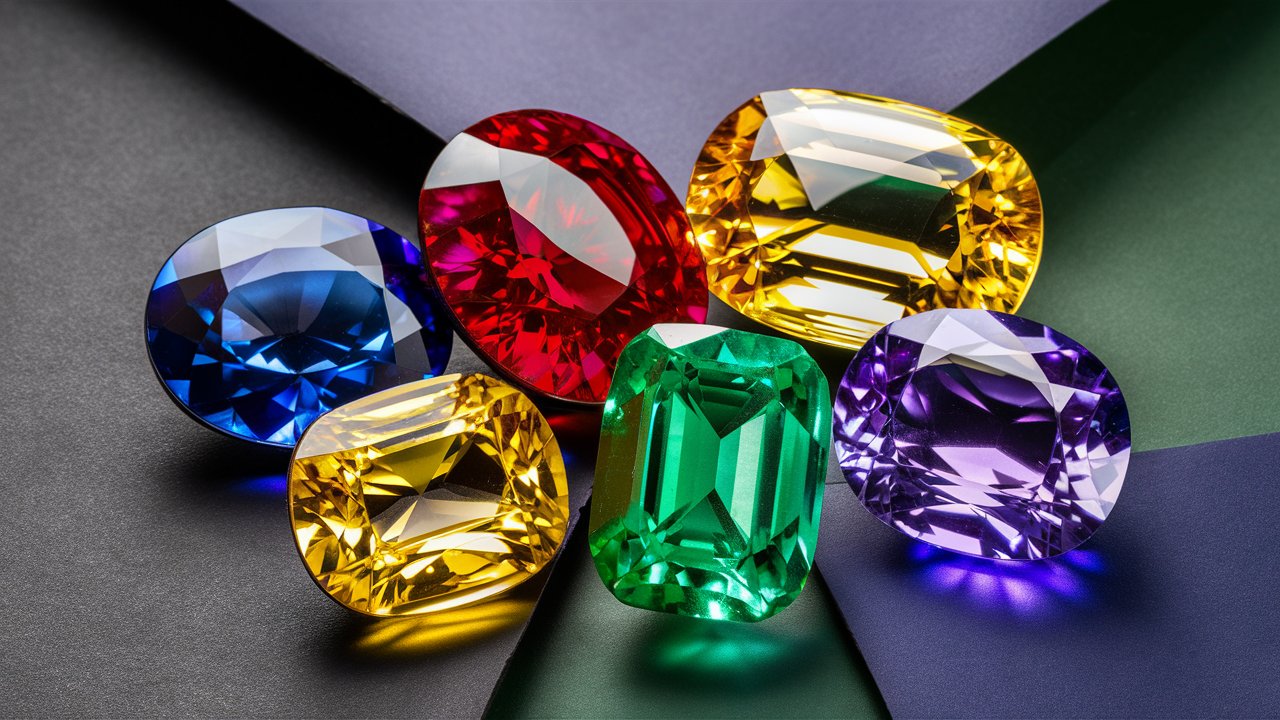Understanding Different Cuts and Styles of Gemstones
Gemstones have fascinated humanity for centuries, transcending mere ornamentation to symbolize wealth, spirituality, and artistic craftsmanship. Each gemstone is a marvel of nature, but its true brilliance is unlocked through meticulous cutting and styling. 
To truly appreciate their allure, it is vital to understand the intricacies of gemstone cuts and styles elements that define their appearance, value, and suitability for different purposes.
The Art of Gemstone Cutting
Gemstone cutting, or lapidary, is both a science and an art form. This process determines how light interacts with the stone, influencing its brilliance, fire, and overall appeal. The cutter’s goal is to maximize the gemstone’s inherent beauty while minimizing waste. This delicate balance requires a deep understanding of the gem’s physical and optical properties.
There are two main categories of gemstone cuts: faceted and non-faceted. Faceted gemstones feature flat, polished surfaces (facets) arranged in symmetrical patterns to enhance light reflection. Diamonds, rubies, and sapphires are often faceted to achieve optimal brilliance. Non-faceted stones, such as cabochons, have smooth, domed surfaces that highlight their color, luster, or unique inclusions. Opals and turquoise are typically cut in this style.
The choice of cut is influenced by factors such as the gemstone’s hardness, cleavage, and optical properties. For instance, gemstones like diamonds are suited to complex faceted cuts due to their exceptional hardness and ability to reflect light.
Exploring Popular Gemstone Cuts
Brilliant Cut
The brilliant cut, epitomized by the round brilliant diamond, is designed to maximize sparkle. It features a symmetrical arrangement of facets that optimize light reflection and dispersion, creating dazzling brilliance. This cut is not limited to diamonds; it is also applied to gemstones like moissanite and zircon, which exhibit similar optical properties.
Step Cut
Step cuts, such as the emerald and baguette cuts, prioritize clarity and color over brilliance. These cuts feature parallel facets arranged in a stepped pattern, creating a sophisticated, understated elegance. Step cuts are ideal for gemstones with excellent clarity, as their open facets highlight the stone’s natural beauty.
Mixed Cut
A combination of brilliant and step cuts, the mixed cut balances brilliance and clarity. The princess cut, for example, combines the brilliance of the round cut with the square shape of a step cut. This style is versatile, appealing to those who seek both sparkle and modern aesthetics.
Styles and Shapes: Beyond the Traditional
Gemstone styling encompasses the overall shape and finish of the stone. While round, oval, and square cuts are classic choices, contemporary trends embrace unique shapes like pear, marquise, and heart. These unconventional shapes add a personal touch, reflecting individuality and artistic expression.
Certain styles, such as the cushion and radiant cuts, blend vintage charm with modern appeal. The cushion cut, with its rounded corners and larger facets, evokes timeless elegance, while the radiant cut’s angular facets enhance brilliance. Gemstone styling is often tailored to the intended jewelry piece, ensuring harmony between the stone and its setting.
The Role of Cultural and Historical Influences
Gemstone cuts and styles have evolved over centuries, shaped by cultural and technological advancements. During the Georgian and Victorian eras, gemstones were cut to maximize carat weight, often resulting in less precise symmetry. The Art Deco period brought a shift towards geometric cuts, reflecting the era’s fascination with symmetry and modernism.
In different cultures, specific gemstone styles hold symbolic significance. For example, jade cabochons are highly prized in East Asia for their smooth texture and spiritual connotations. Meanwhile, Indian jewelry often features uncut or minimally faceted gemstones, emphasizing their natural beauty.
Modern technology, including computer-aided design (CAD) and laser cutting, has revolutionized gemstone styling. These advancements allow for intricate cuts and greater precision, unlocking new possibilities for creativity and innovation in jewelry design.
Conclusion
Understanding the nuances of gemstone cuts and styles enhances our appreciation of these natural wonders. From the meticulous craftsmanship of faceted cuts to the timeless allure of cabochons, each style tells a story of artistry and tradition. Whether selecting a gemstone for personal adornment or investment, knowledge of these elements ensures an informed choice, celebrating the brilliance and beauty of nature’s finest creations.
- GIA: Gemstone Cutting and Styles
- American Gem Society: The Basics of Gem Cuts
- National Gemstone: Understanding Gemstone Cuts
- The Jewellery Editor: Modern Gemstone Cutting Techniques
- Gemological Science International: The Art of Lapidary
- International Gem Society: Guide to Gem Shapes and Styles
- Christie’s: Evolution of Gemstone Cuts
- Smithsonian: Gemstone Origins and Cuts
- Rapaport: The Role of Precision in Gem Cutting
- Jewelers of America: An Introduction to Gemstone Shapes




































